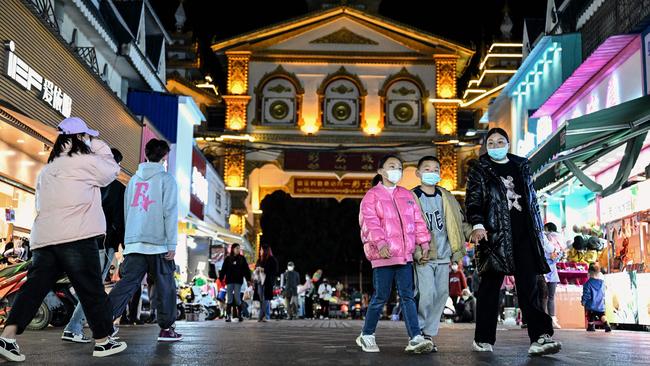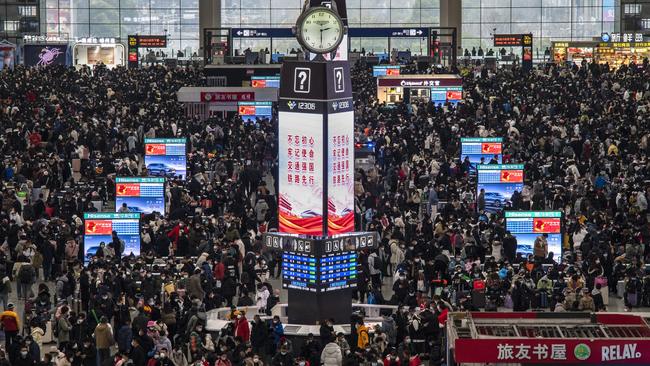China’s economic bounce the recovery world needs

In fact, the year has started well. Europe’s warmer weather has continued; so warm it is breaking records and reminding us of the environmental challenges we face. This has meant global energy prices have fallen, negating one of the major economic concerns from the war in Ukraine.
For the first time in 100 years, the US has failed to elect a House speaker at the first ballot. But the world is so accustomed to anomalies in US politics that such failure has had little obvious impact.
More importantly, China seems to be transitioning incredibly quickly out of Covid restrictions. Subway traffic is rising in 11 of China’s biggest cities, according to Bloomberg, and anecdotes hint that restaurant queues are building quickly. Press reports suggest Covid is spreading rapidly through the population, with a significant human cost.
Even so, anecdotes also suggest travel ahead of the Lunar New Year will be strong. The experience of other countries implies this will be one of the first areas of spending to recover; perhaps more so in China, where travel was constrained during the last three New Year holidays.
Moving through the recovery phase, China’s government predicts people flows to surge 99.5 per cent from 2022. The return of travel to and from China will be welcomed by its near neighbours. This suggests holiday-affected economic data for January and February are likely to already present some recovery signs.
A vigorous demand-led recovery should be clearer from March as China moves through the peak of infections, the accumulated stock of stimulus finally gains traction and the full range of economic activity becomes accessible. Household savings in China have risen sharply. Bank deposits are 50 per cent higher over the past year, equal to 16 per cent of private consumption.

Production isn’t likely to recover as strongly as demand. During the pandemic, production in China performed more strongly than demand, as authorities focused on keeping factories running.
Moreover, the opening of other countries was largely synchronous, whereas China will be opening as the global economy is slowing. Shallow recessions are likely in the US, UK, Europe and New Zealand, adding pressure to China’s export sector.
More broadly, China’s signs of economic recovery provides some insurance against the already low probability of a global recession, which the World Bank defines as a contraction in annual real per capita global GDP. The global population is growing at about 1 per cent, suggesting growth would need to fall far short of our 2023 expectation of 2.4 per cent.
For the global economy, 2023’s immediate challenge is navigating the impact of the rate rises of 2022. That will inevitably result in some difficulties, but we shouldn’t expect the worst.
Household balance sheets are in good shape. In Australia, the US and elsewhere, households have worked hard in the last 15 years to moderate growth in their liabilities and improve cash levels on their balance sheets. In the US, the real economy rather than credit has led the strong post-pandemic recovery. Using the BIS’s credit-to-GDP gap, this has been the least credit-intensive US economic upswing in at least four decades. China’s demand recovery will provide a useful offset as peak tightening moves through the global economy.
Certainly, recession will be disruptive for some industries and businesses, but inflation itself is disruptive and damaging. In fact, a recalibration of demand and supply is likely to benefit some parts of the economy.
A mild fall in activity will bring some respite to consumers challenged by cost-of-living issues. It will normalise demand, giving businesses more space to secure supply and hold on to staff.
Despite the growth challenges, commodity prices in general are likely to remain high. Supply in many sectors will be constrained as global support for returning the natural environment to health has broadened.
In an inflationary environment, our natural capital objectives need to be thought of in opportunity cost terms. What will we do less of to free up the resources? The global slowdown will improve the trade-offs.
Richard Yetsenga is the chief economist at ANZ



The aggressive monetary policy tightening seen around the world last year will – as is intended – show up more forcefully over the next 12 months. Consumption will be slower and economic activity softer, but the landing is unlikely to be too bumpy.